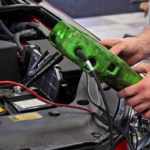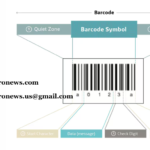Introduction
In the realm of manufacturing, precision and consistency are paramount. This is particularly true in industries where complex machinery is involved, such as in the production of electric motors. Among the critical processes in motor manufacturing is stator winding, a procedure where copper wire is wound around a core to create electromagnetic fields necessary for motor operation. To ensure optimal performance and reliability, enhancing quality control measures in stator winding machine processes is crucial. This article delves into various strategies and technologies aimed at improving quality control in these processes.
Understanding Stator Winding Machine Processes
Before delving into quality control measures, it’s essential to grasp the fundamentals of stator winding machine processes. Stator winding is a precise operation that involves winding copper wire around a stator core in specific configurations. This process forms the foundation of electric motor functionality, directly impacting its efficiency and performance. Stator winding machine automate this intricate task, ensuring uniformity and accuracy in winding patterns.
Challenges in Stator Winding
Despite advancements in technology, stator winding processes present several challenges that can compromise product quality. One common issue is wire misalignment, where the copper wire deviates from the intended path, leading to irregular winding patterns. Additionally, variations in wire tension and insulation thickness can affect the integrity of the winding, potentially resulting in electrical faults or motor malfunction. These challenges underscore the importance of robust quality control measures to detect and rectify deviations promptly.
Implementing Advanced Monitoring Systems
To address quality control challenges in stator winding processes, manufacturers are increasingly turning to advanced monitoring systems. These systems utilize sensors and data analytics to monitor various parameters during the winding operation. By continuously measuring factors such as wire tension, alignment, and insulation thickness, manufacturers can identify deviations from specifications in real-time. This proactive approach allows for immediate adjustments, minimizing the risk of defects and ensuring consistent quality across production batches.
Integration of Artificial Intelligence (AI)
Artificial intelligence (AI) is revolutionizing quality control in stator winding machine processes. AI-powered algorithms can analyze vast amounts of data collected during the winding operation, identifying patterns and correlations that may not be apparent to human operators. By leveraging AI, manufacturers can optimize winding parameters, predict potential defects, and preemptively address quality issues before they escalate. This predictive maintenance approach enhances efficiency and reduces downtime, ultimately improving product quality and customer satisfaction.
Utilizing Computer Vision Technology
Computer vision technology is another valuable tool for enhancing quality control in stator winding processes. By deploying high-resolution cameras and image processing algorithms, manufacturers can inspect winding patterns with precision and accuracy. Computer vision systems can detect abnormalities such as wire overlap, gaps, or irregularities in insulation, enabling prompt intervention to rectify issues. Moreover, automated visual inspection reduces reliance on manual labor, streamlining the production process and minimizing human error.
Implementing Statistical Process Control (SPC)
Statistical process control (SPC) methodologies play a crucial role in maintaining quality standards in stator winding equipment processes. SPC involves continuously monitoring production parameters and using statistical analysis to identify trends or deviations from established norms. By establishing control limits and implementing corrective actions based on data-driven insights, manufacturers can ensure that stator winding processes remain within specified tolerances. This proactive approach enhances process stability, reduces variability, and ultimately improves product quality.
Enhancing Operator Training and Skills
While technology plays a significant role in quality control, the human factor remains paramount. Adequately trained operators are essential for maintaining the integrity of stator winding processes. Manufacturers should invest in comprehensive training programs to ensure that operators possess the necessary skills and knowledge to operate and monitor winding machines effectively. Additionally, fostering a culture of quality consciousness and continuous improvement among personnel can further enhance overall quality control efforts.
Conclusion
In conclusion, enhancing quality control in stator winding machine processes is essential for ensuring the reliability and performance of electric motors. By leveraging advanced monitoring systems, artificial intelligence, computer vision technology, and statistical process control methodologies, manufacturers can detect and rectify deviations from specifications in real-time, thereby minimizing defects and improving product quality. Moreover, investing in operator training and skills development is critical for maintaining consistent quality standards. By embracing these strategies and technologies, manufacturers can optimize stator winding processes, resulting in superior products and enhanced customer satisfaction.




























































































